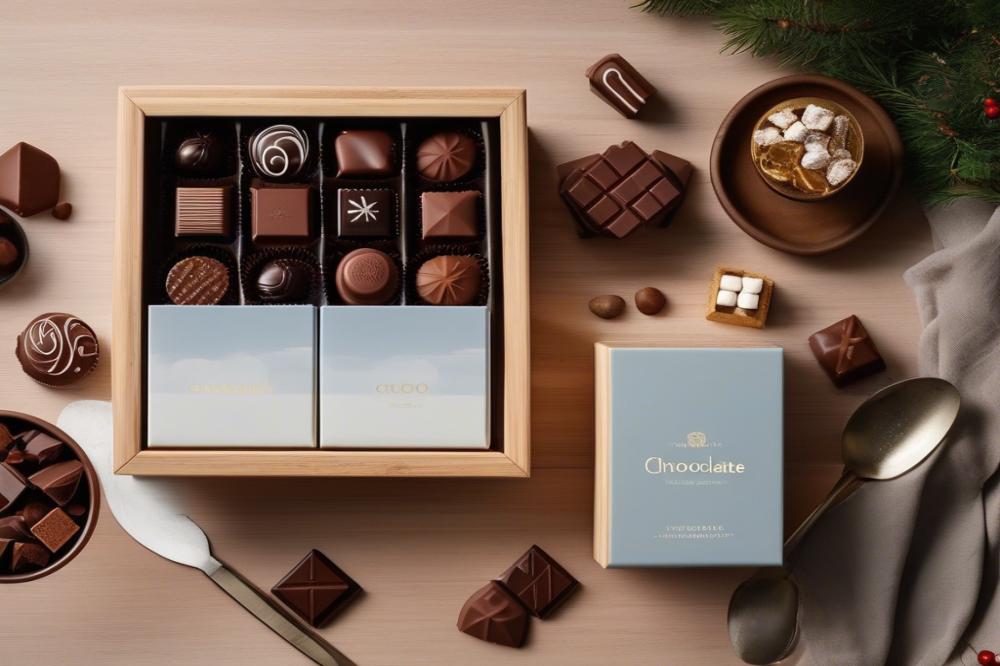Introduction
The Reese’s Fast Break has carved out a significant role in candy history. Celebrated for its perfect combination of peanut butter and chocolate, it has attracted enthusiasts from all walks of life. Over time, this chocolate bar has witnessed a fascinating evolution in brand development and consumer trends.
In the world of snack food, few items evoke stronger feelings than chocolate and peanut butter together. This pairing has a long-standing tradition, which adds to its allure. Reese’s Fast Break not only fits into the narrative but also exemplifies candy innovation. The ingredients are carefully chosen to create that satisfying texture and taste that people crave.
As advertising campaigns promoted this delightful treat, its popularity soared. The evolution of its marketing tactics reflected changing consumer preferences. Over the years, Reese’s Fast Break has become more than just a candy; it symbolizes the joy of snacking. Chocolate lovers and peanut butter fans unite for this cherished treat, highlighting its significant place within the candy world.
The Origins of Reese’s and the Fast Break chocolate bar

History of the Reese’s brand and its founder
H.B. Reese started the Reese’s brand in the early 1920s. Originally, he worked as a dairy farmer and a candy maker in Hershey, Pennsylvania. His passion for combining chocolate and peanut butter led him to create the famous Reese’s Peanut Butter Cup in 1928. With this signature candy, he laid the groundwork for a brand that would evolve significantly over the decades. The combination of rich chocolate and smooth peanut butter quickly became popular. This success propelled Reese to expand his candy offerings and solidify his brand’s place in candy history. Over time, Reese’s grew into a well-known name, celebrated for its delicious chocolates.
Introduction of Fast Break in the candy market
In 1990, the Fast Break debuted as an innovative addition to the Reese’s line. Attention shifted from the popular Peanut Butter Cup to this new snack food. Fast Break featured a unique combination of a soft nougat center, creamy peanut butter, and a chocolate coating. This blend targeted consumers looking for a more substantial treat. By offering a different texture and format, Reese’s aimed to attract a broader audience. The new product sought to meet evolving consumer trends that favored variety in candy choices.
Initial reception and consumer response
Upon its introduction, the Fast Break received a warm welcome from candy lovers. Many appreciated the chewy nougat and creamy filling. Sales figures reflected this positive reception, showing a strong initial interest. Advertising campaigns highlighted the bar’s ideal qualities for a snack. The emphasis on “satisfying” and “delicious” resonated with many buyers seeking something new. Soon, Fast Break became a familiar sight in convenience stores and supermarkets. Consumers enjoyed the innovation and variety that this new chocolate bar brought to their snack options.
Evolution of Ingredients and Recipe

The original recipe for the Reese’s Fast Break bar combined chocolate, peanut butter, and nougat. Milk chocolate formed the outer layer, while a creamy peanut butter center was nestled within. Nougat filled the space between the chocolate and peanut butter, creating a soft texture that appealed to many. This blend of flavors and textures was a defining feature of early snack foods, contributing to the candy’s popularity.
Over the years, ingredient modifications have subtly shaped the Fast Break. The introduction of new chocolate varieties has enhanced the flavor. Some iterations even experimented with dark chocolate to capture different consumer preferences. The brand also shifted its focus to reduce artificial ingredients, aligning with a broader movement toward natural elements in candy history.
Consumer trends play a crucial role in shaping the ingredients of candy bars. As health-conscious choices became more popular, brands explored ways to adapt. Some Fast Break variants experimented with lower sugar content, while others emphasized protein. These changes were a response to rising demand for snacks that could meet dietary needs while still delivering that classic candy experience.
The evolution of advertising has also impacted ingredient selection. Campaigns highlighting sustainability and quality have encouraged brands to choose premium ingredients. Such strategies resonate with a market that increasingly values transparency. As consumers became more aware of what they eat, companies responded by innovating recipes that reflect these preferences.
Innovation in the candy industry often reflects societal shifts. The Fast Break, rooted in its solid foundation, continues to grow and change with consumer expectations. The recipe has seen an ongoing transformation that balances tradition with modern demands. Brand development now focuses on creating a snack that satisfies both taste and health considerations.
Thus, the Fast Break stands as a testament to evolving consumer desires and ingredient choices. Continuous adaptation showcases how the bar remains relevant in an ever-changing food landscape. While original flavors endure, newer recipes provide freshness, ensuring that the beloved snack bar retains its place in candy lovers’ hearts.
Brand Development and Marketing Strategies
The evolution of Reese’s has been remarkable in the world of candy history. This brand began with a simple yet powerful combination of chocolate and peanut butter. Over the years, the product lineup expanded to include various treats, such as cups and bars. Each new item reflects the brand’s dedication to innovation. The introduction of the Fast Break bar is one example of this progression.
Advertising campaigns surrounding this particular product have played a significant role in its popularity. They often highlight the blend of chocolate and peanut butter, tapping into the strong emotional connection many consumers have with these flavors. These campaigns usually emphasize the bar’s on-the-go convenience, appealing to busy individuals seeking a quick snack. Using eye-catching visuals and catchy slogans has helped the brand stand out. Memorable advertisements have not only introduced the bar but also reinforced its place within the broader Reese’s family.
Connection to broader trends in snack food marketing cannot be overlooked. As consumer trends shift towards seeking satisfying and indulgent treats, brands are capitalizing on these desires. The success of the Fast Break bar also relates to the rise in popularity of quick snacks among teenagers and young adults. Many want products that are easy to grab and consume.
Ingredient choices have also influenced how Reese’s has evolved. By showcasing quality chocolate and flavorful peanut butter, the brand has managed to create a loyal customer base. Newer innovations sometimes include limited-edition flavors or alternative versions to entice consumers who are looking for variety. Evolving taste preferences are at the heart of these strategies.
In summary, the journey of Reese’s as a brand reflects constant adaptation to consumer needs. Marketing strategies, advertising creativity, and ingredient developments all contribute to its ongoing success. Each aspect plays a vital role in maintaining Reese’s relevance in a competitive marketplace. Understanding this evolution helps shed light on how the Fast Break bar has carved out a niche for itself.
Cultural Impact and Consumer Trends
Fast Break’s Place in the Global Chocolate Bar Landscape
The Fast Break bar carved out its niche soon after hitting the shelves. Its combination of chocolate and peanut butter appealed to many taste buds. This treat became part of candy history when it showcased how flavors could blend harmoniously. As it gained popularity, brand development played a key role. Marketing campaigns highlighted its unique texture and flavor. This helped position the bar among well-known chocolate options worldwide. Unlike classic bars, it filled a gap by introducing a chewy layer of nougat. The Fast Break offered a different experience compared to traditional candy bars.
The Rise of Peanut Butter in Candy and Snack Foods
Peanut butter’s rise in popularity has been remarkable. Many consumers began seeking snacks that included this beloved spread. New products frequently enter the market, showcasing its versatility. From ice creams to cookies, peanut butter’s influence is hard to ignore. Fast Break contributed to this trend by merging it with chocolate. Fans of sweet and savory combinations embraced this confection. This growing demand for peanut butter pushed brands to innovate continually. The spotlight on this ingredient helped elevate candy choices for many people.
Consumer Preferences Shaping Candy Innovation Over Time
Consumer trends have consistently influenced the evolution of candy. As preferences shifted, companies adapted their offerings. Health-conscious shoppers altered the landscape by favoring snacks with better ingredients. Some looked for items with fewer artificial additives. Others embraced indulgence, leaning towards rich flavors and textures. In response, brands began experimenting with new recipes and combinations. The Fast Break bar itself evolved, reflecting these shifting desires. It emphasizes how brands interpret consumer feedback to stay relevant. Conversation around such products often highlights the mixture of nostalgia and modern taste.
The Future of Reese’s Fast Break
Current Market Position and Challenges
The Reese’s Fast Break holds a notable presence in the candy market. Its mix of chocolate and peanut butter has attracted many fans since its introduction. However, it faces stiff competition from other snack food brands. Many newer products have entered the market, showcasing unique flavor combinations and healthier options. This shift in consumer trends creates challenges for established candies. Maintaining relevance in such a dynamic environment is key. Brand development efforts may need to adapt to these changes. Advertising strategies could also require a fresh approach to attract younger audiences.
Predictions for the Future of Fast Break in the Confectionery Industry
Looking ahead, the evolution of Fast Break is likely to include exciting transformations. Innovations in candy often dictate market positions. As consumer tastes shift, brands may feel pressured to diversify their offerings. Fast Break could introduce limited-edition flavors to spark interest. Market analysts suggest focusing on unique experiences could boost sales. Additionally, the growing popularity of plant-based diets may inspire new recipes. Incorporating alternative ingredients might help capture health-conscious shoppers. Adaptation has been essential throughout its candy history.
Possible New Flavor Innovations and Product Lines
Exploring new flavors may set Fast Break apart from competitors. Think about incorporating seasonal ingredients, such as pumpkin spice or peppermint, for special releases. Beyond flavors, product lines could expand into snack bars or bite-sized versions. This strategy might attract those seeking on-the-go options. A collaboration with popular desserts could also be worthwhile. Imagine a version inspired by classic desserts, merging chocolate and peanut butter with textures like crispy waffles or creamy puddings. Engaging with consumers for feedback on potential innovations could streamline this process. Ideas from fans might lead to successful new products. With candy innovation at the forefront, Reese’s Fast Break can navigate future challenges and thrive in the industry.
Looking Back at a Journey Through Candy History
As we wrap up our exploration, it’s important to reflect on how the evolution of this chocolate bar mirrors broader trends in the candy industry. Over the years, different versions have appeared, each seeking to captivate both new and loyal fans. The combination of chocolate and peanut butter has played a crucial role in this journey. Traditional favorites have paved the way for innovative snacks, carving out a special place in snack food culture.
People often seek comfort in familiar flavors. Peanut butter and chocolate together evoke childhood memories for many. This classic pairing continues to attract a diverse audience. Its popularity across generations speaks volumes. Both flavors complement each other perfectly, creating a desirable treat that satisfies sweet cravings.
In examining the significance of this duo, one can see its impact on snack trends. Many brands have tried to replicate or reinterpret this winning combination. Yet, few have achieved the same level of success. The stickiness of peanut butter paired with the smoothness of chocolate offers a texture experience that is hard to resist.
Ultimately, the Reese’s Fast Break exemplifies how candy has transformed over time while still honoring those nostalgic flavors. Its journey through candy history not only highlights consumer preferences but also the innovation that keeps the candy market vibrant. The love for peanut butter and chocolate remains, proving that some combinations are truly timeless.



